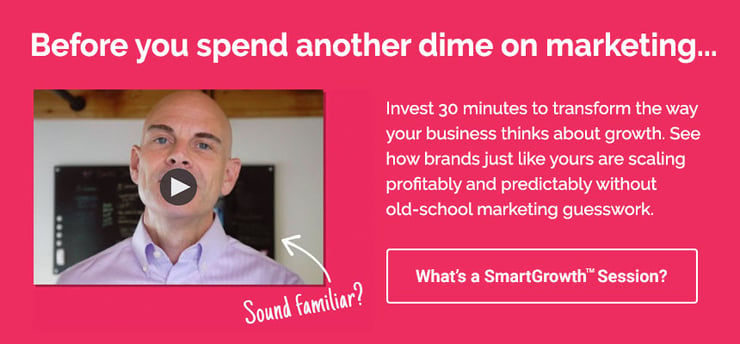Navigating the go-to-market journey for a B2B SaaS startup can feel like steering a ship through uncharted waters. Imagine you’ve developed a groundbreaking product that you’re certain will revolutionize your industry. Now, you’re faced with a critical decision: should you invest heavily in a product-led growth strategy or channel your resources into a sales-led growth approach? Understanding the nuances of product-led vs. sales-led growth can significantly influence your startup's trajectory, and making the right choice could mean the difference between rapid growth and mediocre performance.
Picture this: two promising startups launch in the same market with similar products. One relies on product-led growth, letting the product's inherent value and user experience drive customer acquisition. The other opts for a sales-led growth model, employing a team of sales professionals to convert leads into loyal clients. Over time, both companies gain traction, but their paths and outcomes diverge in fascinating ways.
This article will dive into these two growth strategies, helping you uncover which approach best aligns with your startup’s goals and market conditions. Whether you’re in the early stages of your business or looking to pivot, understanding these models will equip you with the insights needed to make informed decisions and steer your company toward sustainable growth.
Understanding Product-Led vs Sales-Led Growth
What is Product-Led Growth?
Product-led growth focuses on creating a solution so compelling that it essentially sells itself. The core principles revolve around usability and value, ensuring that the product can attract, engage, and retain users without extensive sales efforts. Key metrics for product-led growth include the AARRR metrics: user acquisition, activation, retention, referral, and revenue, along with product usage frequency and depth.
Companies like Slack, Dropbox, and Zoom exemplify product-led growth. Slack offers a free tier that hooks users with its seamless team communication features, leading to organic upgrades to paid plans. Dropbox's freemium model encourages users to store files, eventually enticing them to purchase additional storage. Zoom provides free basic video conferencing, which gains traction through word-of-mouth before converting users to premium versions. These examples highlight how a well-designed product can drive growth by itself.
What is Sales-Led Growth?
Sales-led growth prioritizes a proactive sales force to engage potential customers, focusing on building relationships and guiding them through the buying process. This approach hinges on metrics such as sales cycle length, lead-to-conversion rates, average deal size, customer acquisition cost (CAC), and customer lifetime value (CLTV).
Salesforce and Oracle are prominent examples of sales-led growth. Salesforce leverages an extensive sales team to engage enterprise clients, offering customized solutions that cater to specific needs. Oracle uses its sales force to target high-value enterprise customers, providing personalized demos and negotiations to close deals. In both cases, the emphasis on direct, relationship-driven sales efforts helps secure significant contracts and drive revenue growth.
Pros and Cons of Product-Led Growth for B2B Startups
Advantages
Lower customer acquisition costs: By minimizing spending on sales personnel and marketing, startups can allocate more resources toward product development and user experience. For instance, Slack's viral adoption within organizations reduces the need for a large sales team, resulting in cost savings.
Faster scalability and viral potential: A compelling product can quickly gain traction through word-of-mouth and network effects. Zoom's explosive growth during the COVID-19 pandemic is a testament to how a superior product can scale rapidly when it meets a pressing need.
Enhanced user experience: Continuous feedback loops from users drive product improvements. This iterative development process ensures that the product evolves to meet user needs, leading to higher satisfaction and retention rates. Dropbox's ongoing updates based on user feedback keep it relevant and valuable to its customer base.
Disadvantages
However, product-led growth has its challenges. Higher initial development costs can be a barrier, as significant investment is required to create a high-quality product. Startups need substantial resources upfront to ensure their product stands out in a competitive market.
Dependence on product quality and innovation means that success hinges on the product’s ability to meet and exceed user expectations. If the product fails to deliver, growth can stagnate. Startups must continually innovate and iterate to stay ahead of competitors.
Potentially longer sales cycles can also be a drawback, particularly for complex products. Users may need time to fully understand and appreciate the product's value, delaying conversions. For example, a comprehensive SaaS solution like Notion might require extensive onboarding and exploration before users realize its full potential.
Pros and Cons of Sales-Led Growth for B2B Startups
Advantages
Personalized customer interactions: Sales teams can offer tailored solutions and build strong relationships with clients. By understanding specific client needs and pain points, sales professionals can customize their pitches and proposals, fostering trust and enhancing the customer experience. For example, a SaaS company offering complex analytics software can have sales reps who understand the intricacies of the client’s industry, providing bespoke demonstrations that highlight the product’s unique benefits.
Immediate feedback and adaptability: Direct communication with prospects provides valuable insights to adjust offerings quickly. Through sales calls and meetings, sales teams can gather real-time feedback, allowing the company to swiftly address any concerns or misconceptions about the product. This iterative feedback loop ensures that the product evolves in alignment with market demands, increasing its relevance and appeal.
Higher conversion rates: Particularly effective for complex or high-ticket products requiring detailed explanations and negotiations. Sales-led strategies excel in scenarios where products need a hands-on approach to explain their full value. For instance, an enterprise-grade CRM platform might be better sold through direct sales interactions, where a salesperson can walk the client through the extensive features and integrations, ultimately driving higher conversion rates.
Disadvantages
Higher ongoing operational costs: Salaries, commissions, and training for sales teams can be substantial. Maintaining a high-performing sales force requires significant financial investment, which might strain the budget of a startup. These costs include not only compensation but also ongoing training programs to keep the team updated on the latest product developments and sales techniques.
Scaling challenges: Growth is limited by the number and effectiveness of sales personnel. Unlike product-led growth, which can scale exponentially as more users adopt the product, sales-led growth often scales linearly with the size of the sales team. This dependency can hinder rapid expansion, especially in fast-growing markets where speed is crucial.
Potential for slower initial growth: Building and ramping up a sales team takes time and resources. From recruiting and hiring the right talent to training and onboarding, the initial phases of establishing a sales-led growth strategy can be slow. This delay might be a disadvantage for startups that need to gain market traction quickly to secure further funding or outpace competitors.
When to Use Product-Led vs Sales-Led Growth
Ideal Scenarios for Product-Led Growth
Markets with High User Autonomy
Users prefer self-service models and can independently explore and understand the product. For example, project management tools like Trello or Asana thrive in environments where users appreciate the freedom to test and adopt solutions at their own pace. These platforms provide intuitive interfaces and robust support resources, enabling users to self-serve effectively.
Products with Clear, Tangible Benefits
Easily demonstrable value propositions that can be experienced firsthand. Take Slack, for instance; its value is immediately apparent through a freemium model that showcases its communication-enhancing features. Users can quickly grasp how Slack can streamline their workflows without needing a sales pitch.
Limited Resources
Startups with tight budgets might find product-led strategies more cost-effective in the long run. By focusing on developing a superior product that markets itself, startups can reduce the need for extensive sales teams. Dropbox, for example, grew significantly by leveraging a product-led approach that minimized sales overhead.
Ideal Scenarios for Sales-Led Growth
Complex Products
For products that necessitate detailed explanations and tailored demonstrations, a sales-led growth model can be highly effective. Take, for example, a B2B SaaS platform offering sophisticated data analytics tools. The complexity of such a product often requires a salesperson to conduct personalized demos and walkthroughs, highlighting how the product can be tailored to solve specific business problems. This hands-on approach ensures that potential customers fully grasp the value proposition, increasing the likelihood of conversion.
Industries with Traditional Sales Models
In markets where customers expect personal interaction and relationship-building, a sales-led approach is usually more successful. Consider sectors like enterprise software for healthcare or finance, where decision-makers are accustomed to face-to-face interactions and personalized consultations. Here, a dedicated sales team can build relationships, address concerns in real time, and create trust—essential elements for closing high-stakes deals.
Targeting High-Value Enterprise Clients
For startups targeting large enterprises, the sales-led model proves beneficial. Enterprise clients often have longer buying cycles, multiple stakeholders, and significant budgets. These scenarios justify the investment in a skilled sales team to navigate the intricate buying process, from initial contact through to negotiation and closing. A well-trained salesforce can effectively manage these large, complex deals, ensuring a higher return on investment.
Best Practices for Implementing Product-Led Growth
Building a User-Centric Product
A product-led growth strategy hinges on the product itself being the primary driver of customer acquisition. Start by continually gathering and incorporating user feedback to refine and improve your product. User feedback loops can be established through in-app surveys, beta testing phases, or user interviews. For example, a B2B SaaS tool focused on project management might regularly update its features based on user suggestions, ensuring the product remains aligned with user needs.
Designing intuitive user interfaces is another cornerstone. A clean, easy-to-navigate interface reduces the learning curve for new users, making it easier for them to see immediate value. Take a company like Slack, which offers a straightforward user experience that promotes seamless communication and collaboration right out of the box.
Lastly, consider implementing freemium models and trials. Offering a free version or trial period allows potential customers to experience the product's value firsthand before committing financially. This strategy has been successfully employed by companies like Dropbox, which leverages a freemium model to attract users and then upsells premium features.
Marketing Strategies for Product-Led Growth
Content Marketing and SEO
Creating valuable SEO content that addresses your target audience’s pain points and interests can drive organic traffic to your product. For instance, a B2B SaaS company specializing in cybersecurity could develop a blog series on best practices for data protection, optimized for relevant keywords. This B2B blog strategy helps educate potential customers and positions the company as a thought leader in the field, enhancing brand credibility.
Community Building
Fostering a community around your product encourages user interaction and brand loyalty. This can be achieved through forums, social media groups, or user events. Companies like Atlassian have built thriving communities where users share tips, solve each other’s problems, and provide feedback—creating a sense of belonging and enhancing product stickiness.
Data Analysis
Regularly analyzing user behavior and engagement metrics allows you to refine your acquisition and retention strategies. By leveraging tools like Google Analytics or Mixpanel, you can track how users interact with your product, identify drop-off points, and understand which features drive the most engagement. This data-driven approach enables you to make informed decisions that enhance user experience and drive growth.
Best Practices for Implementing Sales-Led Growth
Building an Effective Sales Team
Recruiting and training are foundational to a successful sales-led growth strategy. When hiring sales professionals, prioritize talent that not only understands sales techniques but also grasps the intricacies of your product and market. Comprehensive training programs should cover product knowledge, market positioning, and effective sales tactics. This ensures that your sales team can confidently articulate the product's value proposition and address potential client concerns.
Moreover, clear sales processes are crucial for maintaining consistency and efficiency within your sales operations. Develop and standardize sales pipelines that outline each step from lead generation to closing deals. This structured approach helps in forecasting sales, managing performance, and optimizing efforts. Integrating robust CRM tools can further enhance these processes by allowing your team to track leads meticulously, manage interactions seamlessly, and analyze data to refine strategies.
Marketing Strategies for Sales-Led Growth
Effective marketing strategies are vital to support a sales-led growth approach. Combining inbound and outbound marketing efforts can create a balanced pipeline of leads. Inbound strategies, such as content marketing and SEO, attract prospects organically, while outbound efforts, like account-based marketing and paid advertising, proactively bring your product to potential client's attention.
Compelling sales collateral is another cornerstone of a robust sales-led strategy. High-quality presentations, detailed case studies, and impactful demos can significantly boost your sales team’s ability to persuade prospects. These materials should clearly communicate the benefits and unique features of your product, making it easier for sales representatives to build a strong case.
Sales and marketing alignment is essential for maximizing the effectiveness of your growth strategy. Ensure that both teams collaborate closely, sharing insights and feedback. This synergy allows for cohesive strategies tailored to the target audience, ultimately leading to higher conversion rates and more efficient use of resources.
Navigating the decision between product-led vs. sales-led growth strategies is critical for any B2B startup aiming to establish a strong foothold in its market. As discussed, product-led growth capitalizes on the inherent value and usability of your product to drive organic expansion, while sales-led growth leverages personalized interactions to build strong customer relationships and secure high-value deals. Understanding the advantages and challenges of each approach will help you align your growth strategy with your unique business goals.
But deciding between product-led vs sales-led growth is just one piece of the go-to-market puzzle. At Brand Theory, we’ve been helping B2B brands grow predictably and profitably for over 20 years. Our comprehensive Growth 2.0 Playbook is designed to guide you through creating a successful go-to-market strategy. Download your free copy today and take the first step towards steady, sustainable growth for your startup.





.png)
.png)
.png)